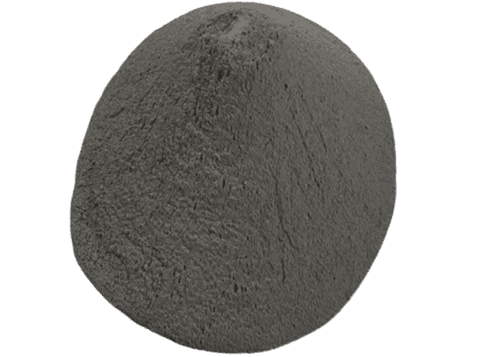Menu
MetalsTek Engineering is a leading supplier of Indium Powder. Our indium powder can be in D50, around 10- 15 uum. As requested, we can offer indium powder with a different particle size.

Material: Indium
Purity: In 99.9%~99.999%
Properties: Silvery, 7.31g/cc Density, 156.6°C M.P., 114.82 M.W.
Size: 100Mesh ~ 800Mesh, or Tailored Sizes

Material: Indium
Purity: In 99.5%
Properties: Silvery, 7.31g/cc Density, 156.6°C M.P., 114.82 M.W.
Size: 10nm ~ 600um, or Tailored Sizes

Material: Indium
Purity: In 99.9%
Properties: Silvery, 7.31g/cc Density, 156.6°C M.P., 114.82 M.W.
APS: 80nm
Specific Surface Area: 16.8 m2/g

Material: Cu80/In20
Purity: >99.9%
APS: <40um, Can be Customized
Applications: Basics of CIG and CIGS Sputtering Targets for Solar Materials

Material: In2O3-99.99%
Properties: Yellowish Green, 7.18g/cc Density, 1,910°C M.P.
Form: Powder, Nanoscale Available
Particles: Can be Customized

Material: In2O3-99.9%
Properties: Yellowish Green, 7.18g/cc Density, 1,910°C M.P.
Mass: 277.793 g/mol
Particles: <100nm, Can be Customized

Material: ITO – 99.99%
Properties: Yellowish Green, 7.14g/cc Density
Particles: 20nm~50nm, can be Customized
Specific Surface Area: 35 m2/g

Material: InN, CAS # 25617-98-5
Purity: 99%~99.999%
Properties: Black, 6.81g/cc Density, 1,100°C M.P.
Particle Size: Tailored Sizes
Indium Nitride (InN) Powder is a pivotal semiconductor material renowned for its extensive utility in both high-speed electronics and solar cell technologies. With its thin polycrystalline film exhibiting exceptional conductivity and superconductivity, it holds promise across diverse applications.
Semiconductor Devices, Indium Nitride plays a crucial role in crafting high-speed electronic and optoelectronic devices. Notably, it contributes to the production of high-electron-mobility transistors (HEMTs), field-effect transistors (FETs), and high-frequency amplifiers, owing to its remarkable electron mobility and wide bandgap that suit high-frequency and high-power applications.
Optoelectronics, Indium Nitride finds application in developing cutting-edge optoelectronic devices such as light-emitting diodes (LEDs) and laser diodes. Its ability to emit light in the ultraviolet (UV) and visible spectrum makes it invaluable for UV photodetectors and solid-state lighting.
Photovoltaic Solar Cells, researchers are actively exploring the potential of Indium Nitride, especially in tandem solar cells and advanced solar energy conversion technologies.
High-Temperature Electronics, Indium Nitride’s wide bandgap and exceptional thermal stability render it suitable for sensors and integrated circuits deployed in extreme environments.
In Materials Research, scientists leverage Indium Nitride to delve into its properties and behavior, thus contributing to the development of novel materials and electronic components.
Indium Nitride’s utility extends to Transparent Conductive Films, where it serves as a transparent conductive material in thin-film coatings for displays, touchscreens, and solar panels.
Thin-Film Transistors (TFTs) employing Indium Nitride are integral components in flat-panel displays like LCDs and OLEDs, ensuring precise pixel switching and superior image quality.
Superconductors, Researchers are actively investigating the superconducting properties of Indium Nitride and its potential applications in superconducting materials and technologies.
In Sensor Technology, Indium Nitride-based sensors cater to diverse needs, including gas sensing, pressure sensing, and temperature sensing.
Energy-Efficient Electronics benefit from Indium Nitride’s characteristics, contributing to enhanced efficiency and reduced energy consumption in power electronics.
Researchers delve into Indium Nitride’s unique quantum properties, exploring its potential implications in quantum computing and emerging Quantum Technologies.
Indium Nitride detectors find utility in Nuclear Detection systems such as gamma-ray spectrometers, facilitating applications in nuclear physics research, nuclear medicine, and radiation monitoring.
Indium Powder, a versatile material, finds applications in various industries due to its unique properties. It primarily produces solar cell conductive paste, ITO conductive film, welding materials, and low melting point alloys. With a melting point of 313.9°F, Indium Powder is available in high purity forms such as 99.99% pure indium powder in 325 mesh size, suitable for different industrial needs. Indium’s softness and malleability make it ideal for creating alloys and bearing materials with low melting points. Moreover, indium’s ability to adhere to glass surfaces allows for its use in transparent conductive coatings for touchscreens and liquid crystal displays. This metal’s unique properties and diverse applications make Indium Powder a valuable material in various technological and industrial processes.
Indium and indium-related powders have various applications across various industries due to their unique properties. Some of the critical applications include:
Overall, indium and indium-related powders are vital in various industries, ranging from electronics and telecommunications to renewable energy and healthcare. Their unique properties make them indispensable materials in modern technology and manufacturing processes.
Indium Powders should be stored in a dry, cool, and sealing of environment. They cannot be exposed to air, in addition, the powders should avoid heavy pressure, according to ordinary goods transportation.